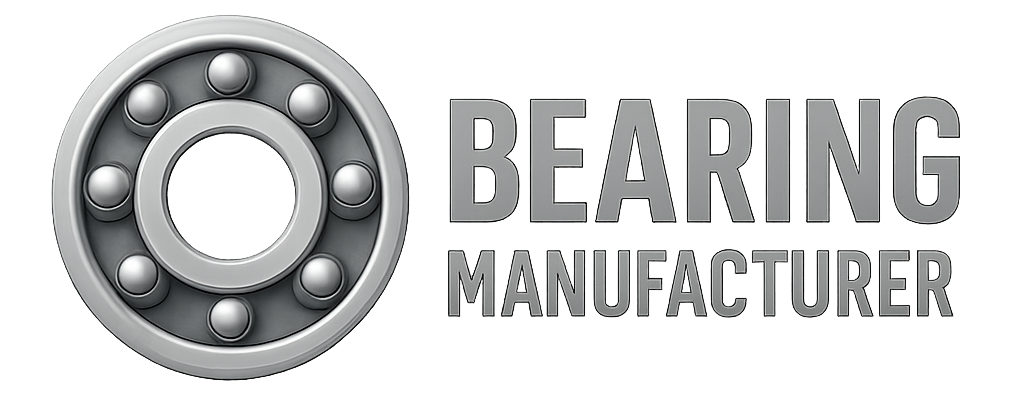Understanding bearing axial load—just like understanding other bearing load types—is essential for ensuring the reliable operation and long service life of mechanical systems. This guide covers the fundamentals of axial load, its impact on system performance, calculation methods, and proven strategies for proper management.
What Is Bearing Axial Load?
Bearing axial load is the force applied parallel to the axis of a bearing or mechanical shaft. Unlike radial loads, which act perpendicular to the shaft, axial loads push or pull along the shaft’s length.
The direction of this load—whether toward or away from the bearing center—determines how forces are distributed internally, influencing friction, wear patterns, and potential failure modes.
Poor axial load management can lead to:
-
Accelerated wear and fatigue
-
Increased friction and heat generation
-
Reduced efficiency
-
Premature system failure
Factors Affecting Bearing Axial Load
External Factors
-
Applied Forces – Gravity, operational thrust, and machine process forces.
-
Operating Conditions – Extreme temperatures, high speeds, and contamination increase load stress.
-
Vibration and Shock – Heavy impacts in industries like mining or construction.
-
Misalignment – Shaft or housing misalignment introduces extra axial forces.
-
Load Direction and Magnitude – Both directly affect stress distribution in the bearing.
Internal Factors
-
Design and Geometry – Bearing type, size, and rolling element configuration influence load capacity.
-
Material Properties – Hardness, fatigue strength, and toughness matter; for example, ceramic ball bearings offer high hardness, low density, and superior wear resistance.
-
Lubrication – The right lubricant type and quality reduce friction and heat, allowing higher load capacity.
-
Load Ratings – Static and dynamic load ratings define the safe operating range.
-
Temperature Effects – Excess heat changes material properties and degrades lubrication.
How to Calculate Bearing Axial Load
A systematic approach ensures accurate axial load calculation:
-
Understand Axial Load Principles – Axial load is the sum of all forces acting parallel to the bearing axis.
-
Identify Applied Forces – Include weight, thrust, and environmental loads.
-
Analyze Load Distribution – Determine how loads are shared among bearings.
-
Determine Load Direction – Know whether loads push or pull along the axis.
-
Perform the Calculation –
-
If the load is purely axial, it equals the applied force.
-
If forces are angled, use trigonometry to find the axial component:
Faxial=F×cos(θ)F_{axial} = F \times \cos(\theta)
-
For multi-bearing systems, apply statics and dynamics equations for force and moment balance.
-
-
Use Simulation Tools – In complex systems like wind turbines, engineers rely on Finite Element Analysis (FEA) for precise load modeling.
Managing and Controlling Axial Load
-
Select the Right Bearing Type –
-
Tapered roller bearings and angular contact ball bearings handle combined radial and axial loads.
-
Thrust ball bearings are optimized for pure axial loads.
-
-
Match Load Ratings – Always ensure static and dynamic load capacities exceed expected demands.
-
Apply Preload When Needed – Preloading improves rigidity and controls axial displacement.
-
Optimize Mounting – Correct mounting and alignment minimize uneven load distribution.
-
Reduce Excess Load – Use multiple bearings or redesign the system to spread loads more evenly.
Risks of Poor Axial Load Management
-
Overloading → Fatigue, pitting, overheating, and early failure.
-
Underloading → Instability, excessive axial movement, and vibration.
In both cases, maintenance costs and downtime increase significantly.
Best Practices
-
Follow manufacturer guidelines on load ratings and tolerances.
-
Monitor operating conditions—especially temperature, contamination, and lubrication levels.
-
Schedule preventive maintenance to detect and correct load-related issues early.
Conclusion
Axial load is a fundamental factor in bearing performance and reliability. By accurately calculating, monitoring, and controlling it, engineers can extend service life, improve efficiency, and reduce unexpected failures.
At Bearing Maker, we provide precision-engineered bearings, expert technical support, and application-specific solutions to help you manage axial loads effectively—ensuring your systems operate at peak performance.
